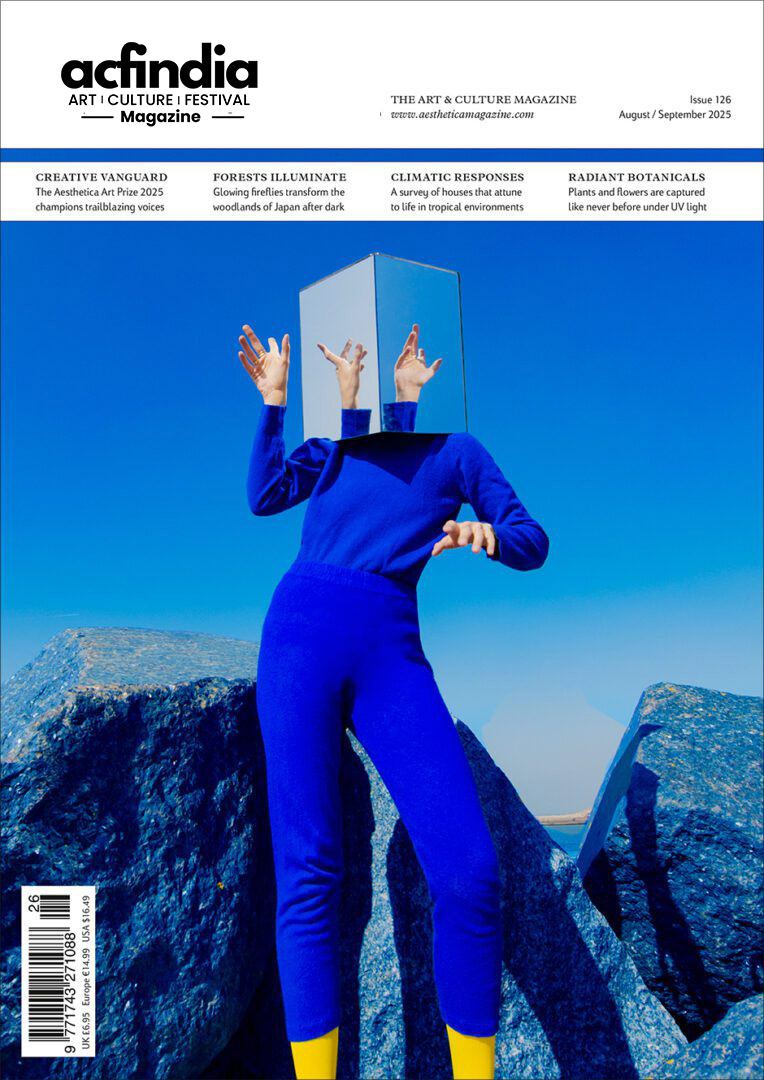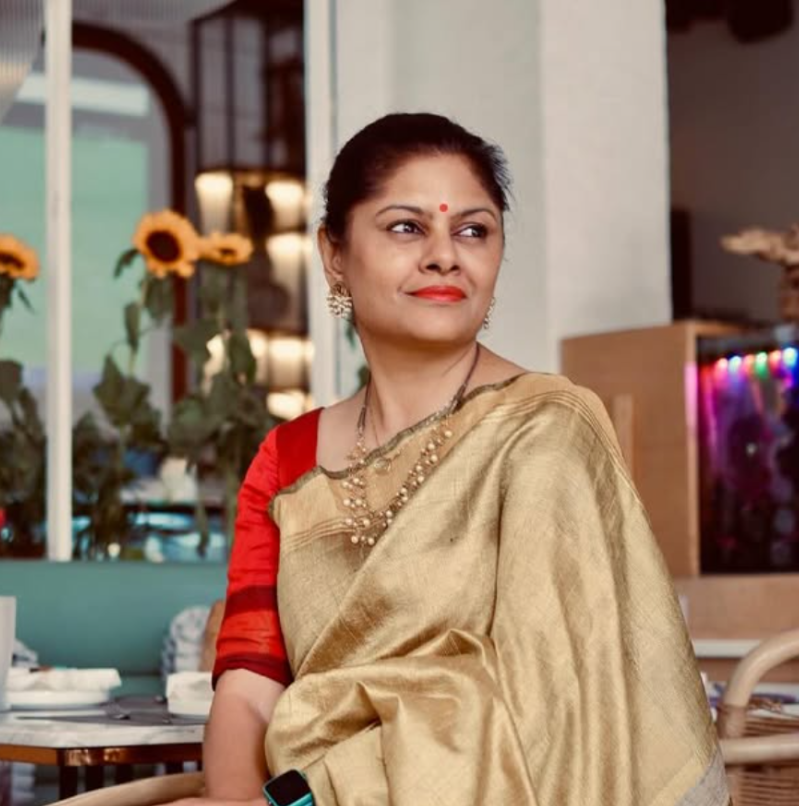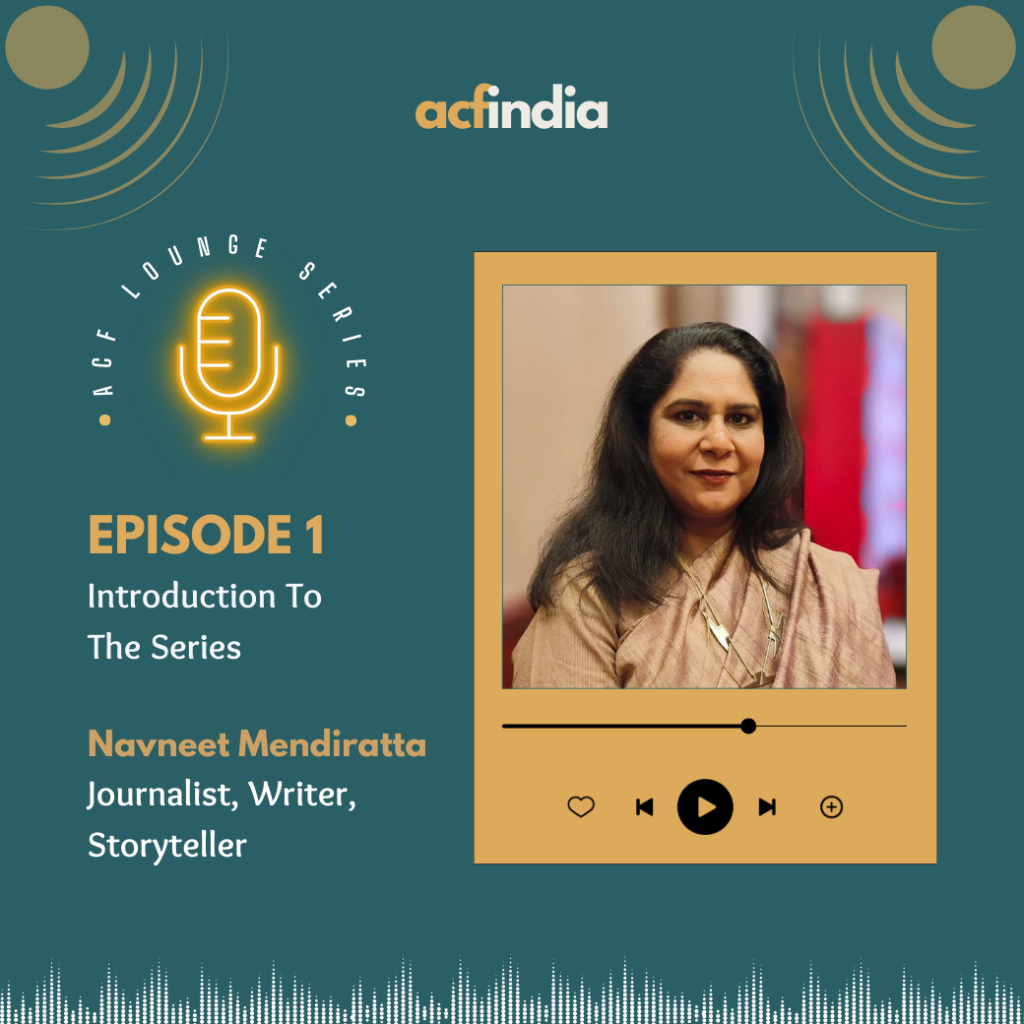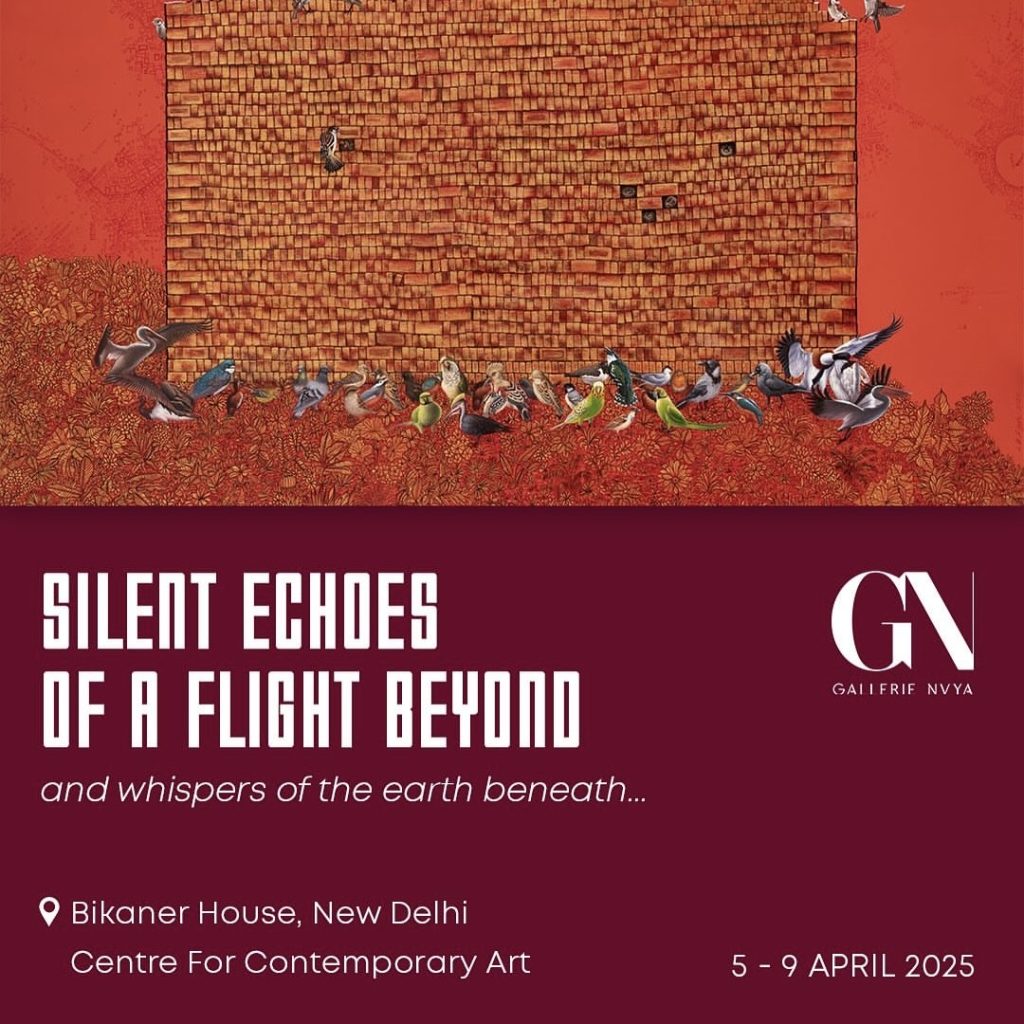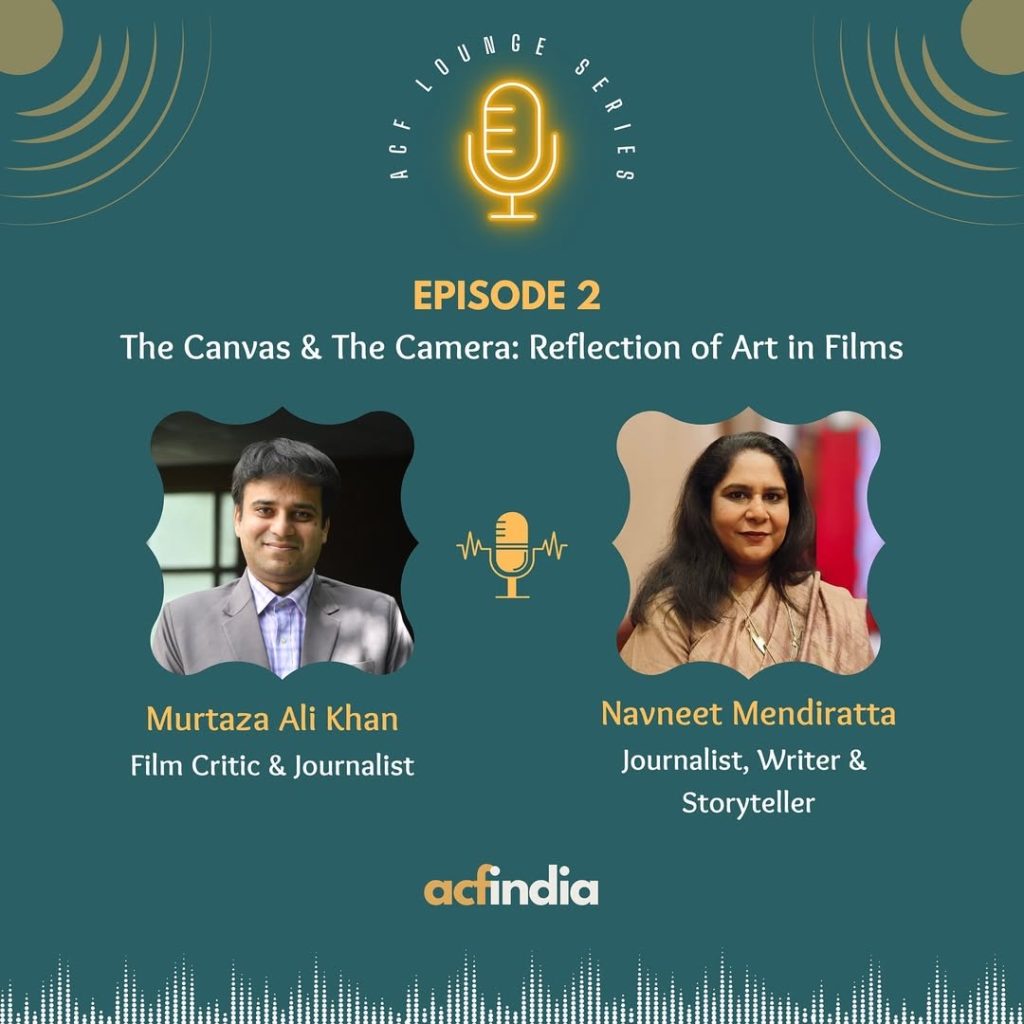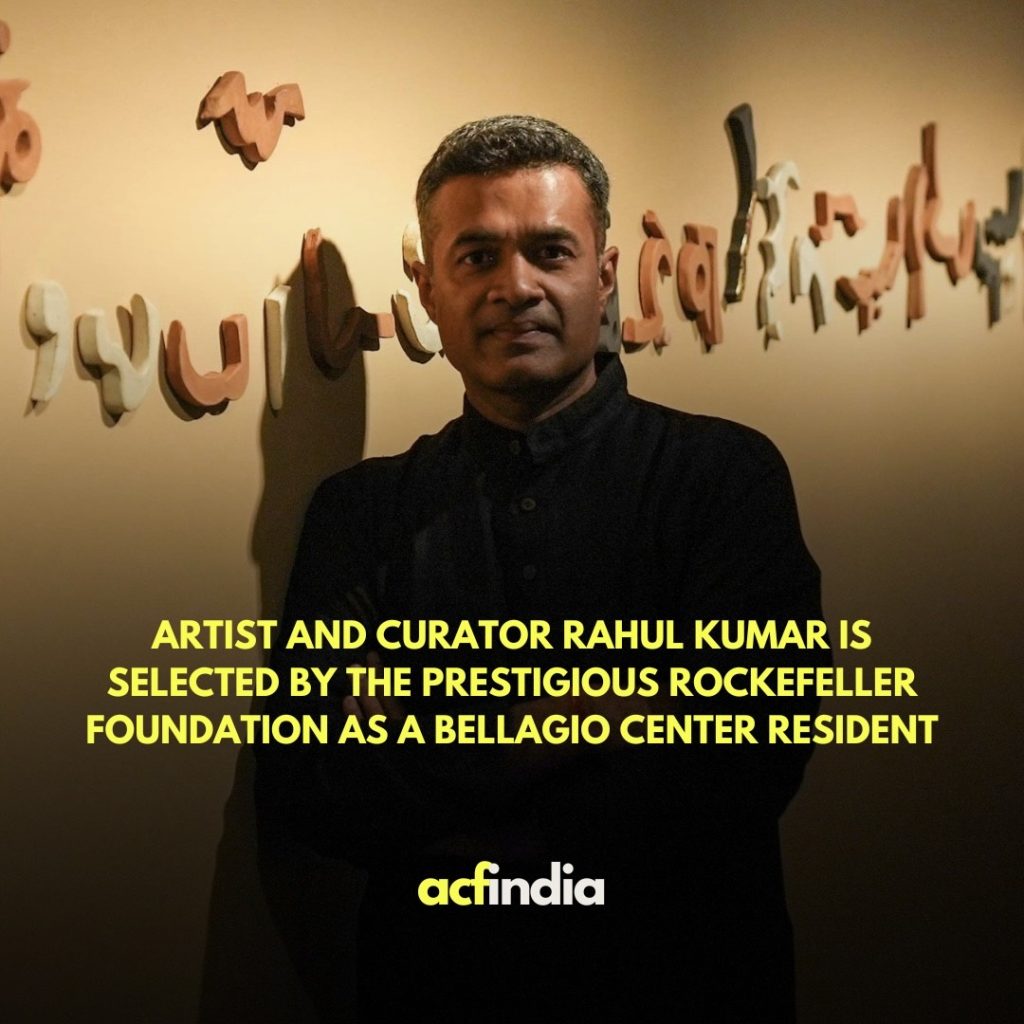Chahat Sharma
On a fine monsoon-drenched August evening at Depot48, the stage came alive with Courting the Courtesans, a performance that was so much more than just music. It was about memory, cinema, and women’s voices that often remain unheard. Journalist, writer, and vocalist Abhilasha Ojha wove together thumri, dadra, and popular film songs, layering them with stories that spoke of longing, resilience, and identity.
This interview explores the heart of her performance, the songs she chose, the courtesan culture that inspired the concept, her reflections on cinema like Arth, and her belief that every melody carries within it a narrative waiting to be explored and heard.
In the image, left to right: Fazal Dholpuri, Abhilasha Ojha, and Shivam Kapoor
Q: Quoting the courtesan is a beautiful title. It is powerful and evocative. What inspired this title, and how did you come up with the concept?
Abhilasha Ojha: Many years ago, I came across Saba Diwan’s book Tawaayaf Nama, and I was completely mesmerized by it. There was so much to unravel about the courtesans of India. I strongly believe they made a significant contribution to the cultural history of India. It was also thanks to my guruma, Indra Mukherjee ji, who was the one who first introduced me to the importance of the role played by many of the women who performed in the royal courts of Awadh. She explained how the Banaras gharana was shaped by these women and the way they performed. They were performing for patrons, they were performing for royalty. But they were singing songs of love, of lost love, of even spirituality. So they were adept at everything.
When Depot 48 called me to do a show, I could have done any ghazal show, I could have done any regular show. But then, what is the takeaway for the audience? There has to be some takeaway. Even as a performer, there has to be something that I need to learn in all of the shows that we prep for.
So I turned to these women. I feel them when I sing thumri and when I sing kajri, dadra. I think that there is so much that needs to be understood, which we still have not understood about them. They were women who were, in many ways, what a modern-day woman of India should be. A woman should have land rights, a woman should have the right to education, and a woman can be a single mom, balancing both home and the professional front. So when we talk about the freedom of women, these women had it all in the past. The women of nobility, the legally wedded wives, did not have all this. But it was these courtesans to whom, nawabon ke khandaan ke bachon ko bheja jata tha, ki aap tehzeeb inse seekhiye.
These women had political knowledge because they were educating themselves, learning to read, to write, learning music, and learning dance forms. When we look at Gauhar Jaan, she is known as the Gramophone Lady, she was the first one to be recorded, or at least one of the first, if not the first. Even in the Bollywood industry, there have been courtesans who became the first female directors, producers, and music directors. Their contribution is lost in the pages of history.
So I think that revival needs to happen, and that is what allowed me to dig deeper into the lives of these courtesans, some of whom we know about, but many of whom remain anonymous.
Q: Could you share when and how your research on courtesans first began? At what point did you decide to pursue this as a dedicated subject of study, and how did you eventually weave it into your artistic and musical dimensions?
Abhilasha Ojha: It all happened quite naturally. When I began preparing for this show, it allowed me to revisit some of my favourite books. For instance, I went back to Tawaayaf Nama, and I also picked up a recent release, A Call of Music. I tend to read a lot of books on music, especially Hindustani classical, because I am fascinated by details like riyaaz routines and by imagining what life must have been like in those times.
As far as courtesans are concerned, delving into their culture and their music became an important precursor to what I now want to explore further. For this show, I was clear right from the beginning. The moment Depot 48 invited me to perform, I knew I wanted to create a show on courtesans. Their stories, and particularly those of figures like Begum Akhtar, who was the queen of ghazals and never shied away from acknowledging her roots as a courtesan. All these women inspired me deeply. This is also why my next project will be an even more thoroughly researched and scripted production, one that goes beyond popular ghazals to include rare works sung by courtesans.
In preparing for this performance, I immersed myself in documentaries, journals, and old newspaper articles. There is a wealth of research material available if you know where to look. But what intrigued me most was tracing the lineage of the songs: Who was the poet whose ghazal or nazm was sung by a courtesan? Who trained a particular courtesan? And the more you look back, the more you realise there are stories within stories. Many of these women were not just artists but also nationalists, actively contributing to India’s independence movement.
Although I began revisiting all this material in earnest about a month ago for the show, the interest, the fitoor, the junoon has been with me for at least six or seven years, ever since my guruma started teaching me the Banaras gharana style of thumri.
Q: Ghazals, thumris, and popular melodies each carry distinct emotional weight. How did you go about curating the pieces for this performance?
Abhilasha Ojha: Honestly, curating the setlist for this show was quite challenging. To begin with, the performance was at Depot 48, which, while technically a restaurant space, has emerged as one of the rising venues for Delhi-based artists. I value that it is not just a dining place but also a platform that genuinely allows musicians to perform. Still, it is not an auditorium setup, which means the curation had to be handled carefully, something engaging enough for people to hum along with, while also offering them some new knowledge or a meaningful takeaway.
For me, it was important to draw on my background in journalism and research, and to weave in something fresh into each song, or at least most of them, that made the setlist informative as well as entertaining. This process was not easy. My musicians and I had many healthy debates. I kept pushing for more thumris and dadras, while they argued in favour of the more popular numbers, the ones they knew would instantly get the audience grooving.
My approach, however, was to balance the two: even within the popular ghazals, I wanted to create moments of learning and discovery. For instance, I introduced a kajri, traditionally sung during the monsoon season, which you would normally not hear in a popular setlist. I also included a dadra that carried the distinct flavour of the Banaras gharana style of singing.
In the end, the performance became a thoughtful mix of well-loved songs and lesser-heard pieces that I feel deserve wider recognition. It was the result of many discussions, some compromises, but also a strong commitment to ensuring that the audience experienced both enjoyment and enrichment.
Q: Which was the first song from the setlist that you were very sure of, “Yeh toh hona hi hona hai”?
Abhilasha Ojha: The dadra and the kajri were especially close to my heart. Saavan ki ritu—which my guruma had been teaching me was something I knew had to be part of the setlist. Another song I was very clear about including was Yamuna kinare mero gaon, sanware aijayo, sung so beautifully by Prabha Atre ji. What made it even more meaningful was hearing Kaushiki Chakraborty ji’s live rendition, where she gave the song a perspective I had never thought of before. According to her, it could be seen as Radha’s very first introduction to Krishna, “Radha rangili, mero naam. Sanware aijayo, Yamun kinare mero gaon”, almost as if Radha is giving Kanha her name and address, inviting him to come visit her.
For me, this was fascinating. It reaffirmed my belief that every song carries a story, and that it is important to unravel these stories for the audience, even if that means bringing in compositions that are not widely popular. I was thrilled to include these pieces because they opened up new ways of listening.
Due to limited time during the performance, I could only sing one stanza. But the full version has three to four stanzas. I had once read an expert’s remark that this particular composition is unique because it fuses the tender love of Radha with the devotional intensity of Meera. That, I feel, is what makes it such a powerful and timeless song.
Q: Do you think the stories and legacies of courtesans receive the respect they deserve today? What more do you think can be done?
Abhilasha Ojha: You know agar nahi hote na courtesans, jo cultural history ke panne hain, woh adhoore reh jaate. Like I have often mentioned, today much of what we call Hindustani classical music, whether it is thumri, whether it is dhrupad, whether it is khayal gayaki, all these forms were kept alive and flourished in the royal courts because of courtesans. Among poets, there used to be competition kaun si courtesan meri ghazal ya nazm sunaegi, ya kaun si courtesan mere likhe hue geet gaye gi.
As I read and researched, I realised that ghazal singing originally existed as part of thumri. In Awadh, for example, a thumri might be sung in Bhojpuri or Awadhi dialects, interspersed with Urdu couplets. Over time, the ghazal developed into a genre of its own. So when we speak of the courtesans, we are speaking of women who were at the very centre of shaping and evolving these forms.
It is also important to remember the context. Women of nobility were bound by the purdah system, and very rarely interacted with men outside their families. Education was limited to them. But courtesans, by the very nature of their world, engaged with poets, musicians, and kings, and in doing so, they were already creating the cultural change we now speak of. Rulers like Wajid Ali Shah of Lucknow played a huge role here. He actively promoted art and culture, and even married a courtesan. Similarly, Maharaja Ranjit Singh had a wife who was once a courtesan. These women were not marginalised at the time; they held status, dignity, and were seen as custodians of culture.
Their contribution is immense. They ensured that music, dance, and oral traditions flourished. Many of the classical or semi-classical pieces we hear today have likely survived because these women carried them forward, teaching them to their daughters, who in turn taught them to theirs. But that status changed drastically under colonial rule. The British stripped them of land rights, social recognition, and reduced them to the label of “cheap women.” They were disrespected simply because they did not fit into the British idea of “legitimate” society or marriage.
Of course, the realities were layered and complex. There must have been tensions between the women of nobility might have felt insecure, and the desired courtesans, which is why the label of “the other woman” was so easily applied to the latter. Notice, there was never “the other man.” A nawab or royal man could have both a family and a courtesan, and it was not considered wrong. But courtesans, despite their power, also had their vulnerabilities. Think of a story like Umrao Jaan. Perhaps she longed for a family life, perhaps for a child with a father figure. These emotional layers are important to acknowledge, too.
The tragedy is what came later. After Wajid Ali Shah was exiled, as the British gained control over princely states, the courtesans’ status diminished rapidly. There is a heartbreaking account I once heard in an interview with Kaushiki Chakraborty ji. Courtesan families in Banaras told her that there came a time when, out of shame, they threw away the sarangi, tabla, harmonium, instruments that once defined their identity into the river. They no longer wished to be associated with the arts that had once brought them honour.
Even today, if you walk through the lanes of Banaras, you will find women working as hairdressers, tailors, or in small trades, but refusing to admit that their mothers, grandmothers, or great-grandmothers were courtesans. And that, I feel, is a great loss. Because this is not a history of shame, it is a legacy of extraordinary strength, artistry, and cultural vision.
As women artists today, I believe we must reclaim pride in that legacy. In my limited way, if I can contribute even a little to changing the perception around courtesans, if I can make people see their role not as marginal, but as central to our cultural history, then I will feel I have achieved something. Of course, there is still much more to be uncovered, but even this small shift in perspective would be worthwhile.
Q: Films like Umrao Jaan and Pakeezah have kept the courtesan culture alive in popular imagination, and we also see universities and researchers engaging with it more seriously today. But in places like Banaras, where many women have distanced themselves from that ancestry and identity, do you feel this shift in cinema, scholarship, and the arts could encourage a renewed sense of acceptance or pride in that heritage? Do you see such a possibility emerging in the arts world?
Abhilasha Ojha: I certainly hope so. Kaisa hoga… mushkil hoga. Because for them, those stories are very different. Woh bohot alag hai. It hits very close to home.
Think about it, living in a single small room, taking care of family members, carrying the weight of stigma. That is the battle they are still fighting today. I hope that one day they can say, with pride, “Yes, my grandmother was a courtesan. She performed in the royal courts. She sang pieces like Ras ke bhare tore nain, immortalized by Gauhar Jaan.”
Gauhar Jaan herself is such a fascinating figure. She was not just a performer; she was the very first artist ever to be recorded in India’s history. One of her songs even found its way into Monsoon Wedding, and it carried such beauty, such flavour, such raas, it showed how timeless her artistry was. Even today, contemporary musicians still take those same melodies, but they layer them with drums, piano, and Western influences. So the core, the traditional melody, remains, but it gets reimagined for a new audience.
Popular culture, of course, has shaped how we see courtesans. Films like Pakeezah, Umrao Jaan, or even the recent Heera Mandi have all kept that imagery alive, though not always accurately. There is a very important book by Ruth Vanita, Dancing with the Nation, which looks at over 200 “courtesan films” and unpacks how these women have been represented. Sometimes, the portrayals are layered and powerful, but other times, they fall back on stereotypes.
Take Pakeezah, for instance. At its core, the story insists that the courtesan must be “rescued” by a man, that her redemption lies only in being a virgin and marrying into a respectable family. That becomes her entire arc. But we must also remember the film took 15 years to make, and by the time it was released in 1972, the whole Muslim cultural genre in cinema was fading out. In that sense, Pakeezah holds its importance. At least, it was a story told from the woman’s perspective, even if bound by its time.
Or think of Main Tulsi Tere Aangan Ki. It begins with a stunning semi-classical piece sung by Shobha Gurtu ji, rooted in the Hindustani tradition. But the way the courtesan is shown, just a “dancing girl” performing for the gallery, diminishes the depth of the music itself. That, to me, feels like a loss.
And then there is Umrao Jaan. I had the chance to watch its restored version on the big screen recently, and it reminded me why that film continues to resonate. It is a courtesan’s story, yes, but one told with dignity, sensitivity, and emotional strength. Rekha’s performance gave voice to every shade of longing, pain, and resilience. That, to me, is the kind of representation that does justice, not just to the woman, but to the entire tradition she embodies.
Q: Was there a particular piece from the evening, apart from the one we have already spoken about, that held a very special meaning for you, either personally or artistically?
Abhilasha Ojha: Yes, there was this medley we did, drawing from Arth and a few other Jagjit and Chitra Singh songs. Everyone knows these ghazals today: Jhuki Jhuki Si Nazar, Bekaraar Hai Ke Nahin, Tumko Dekha To Yeh Khayal Aaya, Hothon Se Chhulo Tum, Mera Geet Amar Kar Do, they have become part of our collective memory. I wanted to sing them precisely because I knew the audience would hum along, but also because revisiting Arth gave the medley a very personal meaning for me.
While preparing for the show, I decided to rewatch the film. It struck me all over again how layered the story is. At its heart are three characters. Pooja, an orphan who longs for nothing more than a home, a husband, a family, the usual simple image of a happy life. When she marries Raj, a struggling filmmaker, and he places the keys of their new home in her hand, saying, “This is your home,” it feels as though her dream has come true. But that illusion shatters when she discovers Raj is in love with Kavita, a successful actress. He admits the affair openly and leaves her for Kavita, setting the stage for two parallel journeys of self-discovery, Pooja’s and Kavita’s.
Pooja has to rebuild her life beyond the identity of being a wife. Kavita, too, is forced to confront her fears: “If he leaves his wife for me, who is to say he won’t leave me for someone else?” Eventually, Pooja finds strength in choosing her path, deciding to adopt her maid’s daughter and defining family on her terms.
There is a particularly powerful scene that stayed with me: in the heat of an argument with Kavita, Pooja clutches her mangalsutra and says, “I am a married woman,” hurling society’s most painful labels at Kavita, calling her the kind of woman who takes men away. And yet, later in the film, Pooja finds the clarity to sit across from her and admit: “My marriage was false from the beginning. You did not ruin it; it was over long ago.” That moment of resolution is profound.
Revisiting Arth reminded me how quickly women are labeled. If you are not a wife, if you are not a mother, you are branded a “loose character,” a courtesan, an outsider. But every woman carries a far more complex story, one that society often fails to acknowledge. Singing those songs within the medley became more than just nostalgia, it became a way to open up those layered conversations again. For me, Arth is not just a film of its time, it is still a mirror for how we perceive women and the identities we impose upon them.
Abhilasha Ojha at Depot48
Through Courting the Courtesans, Abhilasha Ojha reminds us that music is never just about melody; it is about stories, perspectives, and the lives that inform us about them. By weaving together classical traditions, film songs, and narratives of women who have long been misunderstood, misrepresented, and often forgotten, she offers a space for both reflection and discovery. As this conversation shows, her performance was not only a tribute to the legacy of these women but also a gentle provocation that urges us to listen more closely, question deeply, and embrace the many voices that shape our cultural history.
©Depot48, via Instagram

